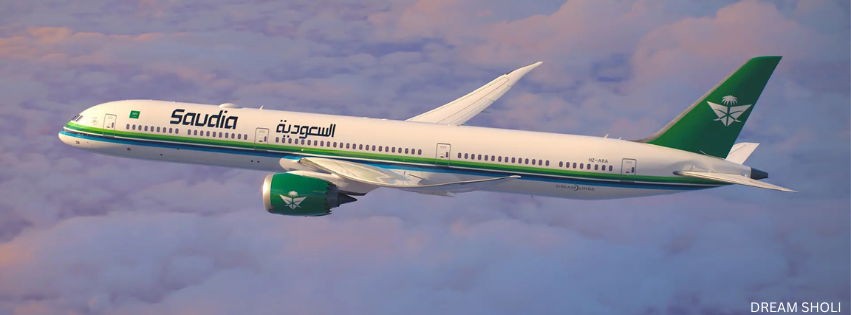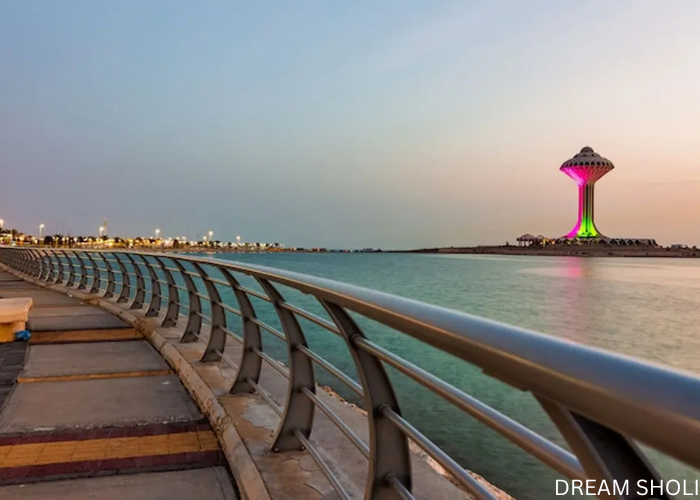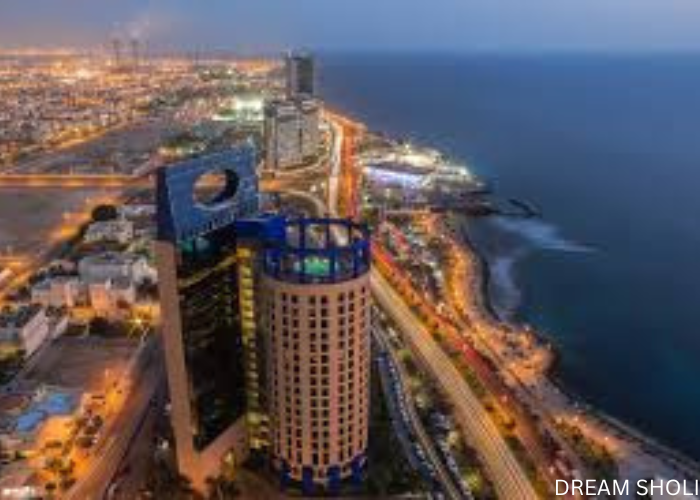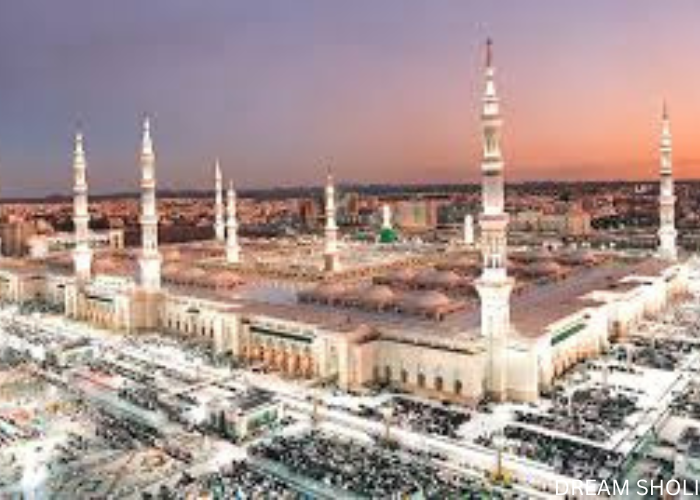
Saudi Arabia, located on the Arabian Peninsula, is a country renowned for its rich cultural heritage, religious significance, and vast deserts. As the birthplace of Islam, it is home to the two holiest cities in the Islamic faith: Mecca and Medina. Every year, millions of Muslims from around the globe embark on the Hajj pilgrimage to Mecca, which is a significant event that shapes the country’s cultural and social landscape. The Kingdom’s capital, Riyadh, is a bustling metropolis characterized by modern skyscrapers, shopping malls, and a vibrant economy, serving as the political and administrative center of the country. Saudi Arabia is also known for its diverse geography, which ranges from the vast Rub’ al Khali desert to the beautiful Red Sea coastline, offering stunning landscapes and opportunities for adventure. Traditional coffee and dates hold a special place in Saudi culture, often served to guests as a gesture of hospitality. The country’s rich history is reflected in its archaeological sites, traditional markets (souks), and historic buildings, such as the UNESCO-listed Diriyah and the ancient Nabatean city of Al-Ula.
Saudi Arabia experiences a predominantly arid desert climate characterized by extreme temperatures and low rainfall. Summers, which last from June to September, can be intensely hot, especially in the interior regions, where temperatures frequently exceed 40°C. In cities like Riyadh and Jeddah, the heat can be oppressive, making air conditioning essential for comfort. Winters, from December to February, are milder, with daytime temperatures ranging from 14°C to 24°C, although it can drop significantly at night, particularly in the desert areas. Rainfall is scarce, with most regions receiving less than 250 millimeters annually, primarily between November and April. The western coastal areas, such as Jeddah, experience slightly more humidity and occasional rainfall, particularly during the winter months. Despite its harsh climate, the diversity in geography means that some areas, such as the Asir region in the southwest, enjoy a more temperate climate with higher rainfall and lush landscapes.

Saudi Arabian cuisine is a rich tapestry of flavors and traditions that reflects the country’s diverse culture and history. Staple foods include rice, wheat, and dates, often accompanied by a variety of meats such as lamb, chicken, and beef. One of the most iconic dishes is Kabsa, a fragrant rice dish seasoned with a blend of spices and served with meat and vegetables, showcasing the culinary influence of Bedouin traditions. Another popular dish is Mandi, which features spiced rice and marinated meat, often cooked in a traditional underground oven. Meals are typically communal, emphasizing hospitality and sharing, and are often enjoyed with traditional bread, like Khubz or Tannour. Saudi Arabia is deeply rooted in Islamic traditions, with customs and practices heavily influenced by the religion. Festivals such as Eid al-Fitr and Eid al-Adha are celebrated with family gatherings, feasting, and giving to charity. The art of storytelling, poetry, and traditional music plays an essential role in the culture, with the country being home to rich oral traditions. Additionally, the country has a vibrant handicraft scene, producing intricate textiles, pottery, and traditional jewellery. The blend of ancient customs and modern influences creates a unique cultural landscape that is celebrated through various forms of art, music, and dance, making Saudi Arabia a captivating destination for those interested in experiencing its heritage.


It is situated along the Arabian Gulf and boasts a rich history as a center for trade and commerce. Dammam is known for its modern infrastructure, bustling markets, and cultural diversity, making it a dynamic urban center in the kingdom. Dammam is also known for its parks and gardens, such as the King Fahd Park, which provides green spaces for relaxation and leisure activities. The local economy is heavily influenced by the oil industry, and Dammam plays a crucial role in Saudi Arabia’s oil production and export. King Fahd International Airport (DMM), located approximately 25 kilometers northwest of the city, is one of the largest airports in the world by area. It serves as a major gateway for domestic and international travel, connecting Dammam to cities across the globe. The airport features modern facilities and a range of amenities, ensuring a comfortable experience for travelers. With its strategic location and extensive flight connections, King Fahd International Airport enhances Dammam’s status as an important center for commerce and tourism in Saudi Arabia.


Known for its unique blend of modernity and tradition, Jeddah is often referred to as the “Gateway to Mecca” due to its proximity to the holy city, making it a critical hub for millions of Muslim pilgrims traveling for Hajj and Umrah. The city boasts a rich cultural heritage, evident in its historical districts such as Al-Balad, a UNESCO World Heritage site, featuring traditional coral houses and ancient souks (markets). Jeddah is also famous for its stunning waterfront, the Jeddah Corniche, which stretches along the coastline and offers picturesque views, recreational parks, and cultural landmarks, including the iconic King Fahd Fountain, one of the tallest fountains in the world. King Abdulaziz International Airport is the main airport serving Jeddah, located approximately 19 kilometers north of the city center. It is one of the busiest airports in Saudi Arabia and serves as a major international hub, particularly for pilgrims traveling to Mecca for Hajj and Umrah. In addition to its role in religious tourism, the airport connects Jeddah to numerous global destinations, facilitating both business and leisure travel. The airport’s efficient services and strategic location make it a key gateway to the western region of Saudi Arabia and an important transit point for connecting flights to other parts of the Middle East, Asia, Europe, and beyond.
Medina, known as Al-Madinah al-Munawwarah, is one of the holiest cities in Islam, second only to Mecca. Located in the Hejaz region of Saudi Arabia, it holds immense religious significance as the city where the Prophet Muhammad established the first Muslim community after the Hijra (migration) from Mecca. Medina is renowned for its rich history, vibrant culture, and religious heritage. One of the city’s most prominent landmarks is the Prophet’s Mosque (Masjid al-Nabawi), which is the burial place of the Prophet Muhammad and one of the largest mosques in the world. The mosque features stunning architecture, with its iconic green dome and expansive courtyards, attracting millions of pilgrims and visitors each year. Prince Mohammad bin Abdulaziz Airport (MED) serves as the main airport for Medina, located approximately 15 kilometers from the city center. This airport is a vital entry point for pilgrims traveling to the city for Hajj and Umrah, offering numerous international and domestic flights. The airport’s facilities are designed to accommodate the high volume of travelers, providing a range of services to ensure a smooth journey for visitors coming to experience the spiritual and historical significance of Medina. With its blend of spirituality, history, and hospitality, Medina remains an essential destination for Muslims around the world.


Explore the world effortlessly with our tailored travel packages. Let us handle the details while you create unforgettable memories.
Copyright 2024 Dream Sholi